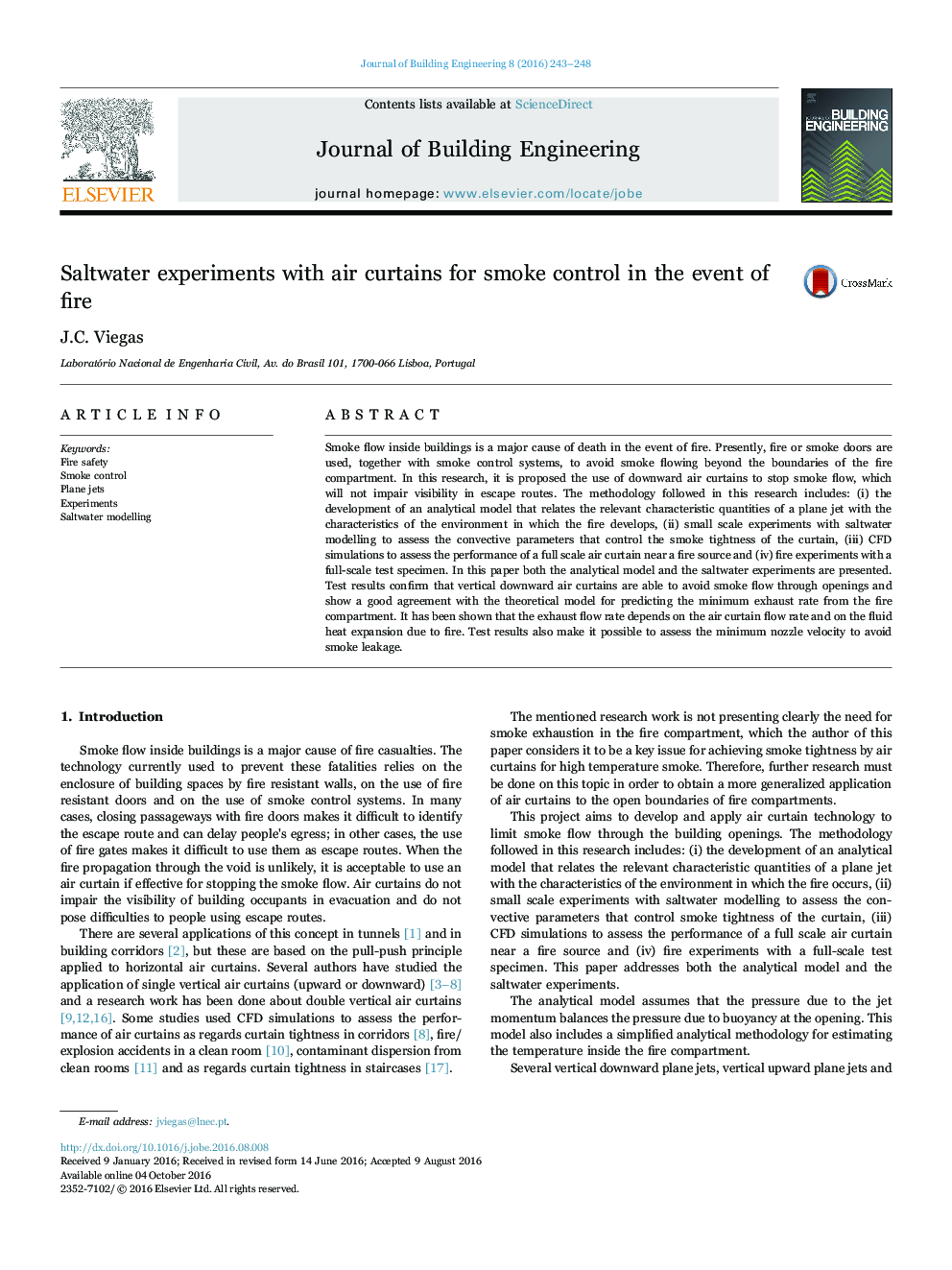| کد مقاله | کد نشریه | سال انتشار | مقاله انگلیسی | نسخه تمام متن |
|---|---|---|---|---|
| 4923226 | 1430640 | 2016 | 6 صفحه PDF | دانلود رایگان |
- The use of a downward air curtain (plane jet) to avoid the smoke flow through an opening in the event of fire is proposed.
- A model to estimate the jet velocity and the exhaust flow rate required to obtain the smoke tightness at the opening is presented.
- Small scale saltwater experiments were performed to validate the convective part of the model.
- Saltwater test results confirm the model and show that is possible to obtain the smoke tightness at the opening.
Smoke flow inside buildings is a major cause of death in the event of fire. Presently, fire or smoke doors are used, together with smoke control systems, to avoid smoke flowing beyond the boundaries of the fire compartment. In this research, it is proposed the use of downward air curtains to stop smoke flow, which will not impair visibility in escape routes. The methodology followed in this research includes: (i) the development of an analytical model that relates the relevant characteristic quantities of a plane jet with the characteristics of the environment in which the fire develops, (ii) small scale experiments with saltwater modelling to assess the convective parameters that control the smoke tightness of the curtain, (iii) CFD simulations to assess the performance of a full scale air curtain near a fire source and (iv) fire experiments with a full-scale test specimen. In this paper both the analytical model and the saltwater experiments are presented. Test results confirm that vertical downward air curtains are able to avoid smoke flow through openings and show a good agreement with the theoretical model for predicting the minimum exhaust rate from the fire compartment. It has been shown that the exhaust flow rate depends on the air curtain flow rate and on the fluid heat expansion due to fire. Test results also make it possible to assess the minimum nozzle velocity to avoid smoke leakage.
Journal: Journal of Building Engineering - Volume 8, December 2016, Pages 243-248
